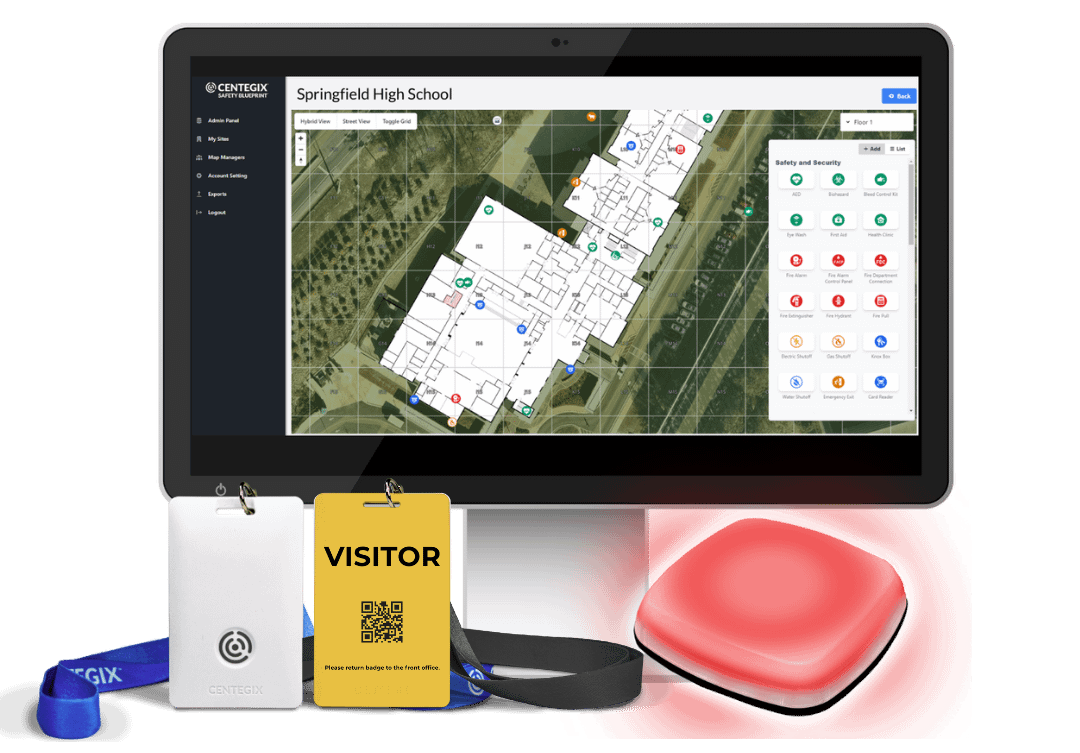Creating a culture of safety in healthcare is a team effort. To create meaningful change, see measurable safety improvements, and reduce violence in healthcare, all departments and every team member must be invested and involved in safety planning and implementation.
Where should these efforts begin? Who are the primary people who can help improve safety in healthcare? Which key practices offer the greatest potential to address ongoing challenges to safety? Let’s explore these questions together.
Healthcare Executives Promoting a Culture of Safety
A culture of safety starts with strong leadership. Healthcare executives can facilitate cultural change around workplace safety by evaluating their facility’s specific needs, valuing and actively seeking staff input, and spearheading the prioritization of strategic initiatives. When executives use their roles to emphasize the importance of safe work conditions and make safety a priority for everyone, that message spreads to all levels of the organization. Safety becomes more than just policy. It becomes an extension of company values.
Working in tandem with all clinical administrators, C-suite leaders must advocate for workplace safety and the measures and practices necessary to improve and maintain it. C-suite leaders should:
- Define workplace violence to create clarity around the problem
- Establish the scope of the issue as it applies to the organization
- Map out a firm and flexible organizational structure focused on prevention
- Endorse plans for violence prevention committees that engage representatives cross-functionally and call on their perspectives and experiences
- Identify and mitigate risk factors, including physical premises and visitor screening
- Consider the need for incident response technology and reporting
- Support ongoing staff training to prepare them to identify and respond to escalating or violent incidents
- Engage with community leaders and partners such as security professionals, law enforcement, and community agencies to establish collaborative guidelines for improved safety
- Communicate frequently on current status and active prevention measures, and regularly report on organization-wide progress
Conveying a commitment to safety in healthcare and workplace violence prevention raises awareness, shows empathy, creates strong partnerships, builds company culture, and gives meaningful context to the organization’s policies and programs.
Chief Nursing Officers and Administrators Supporting Safety in Healthcare
When executive leadership understands the daily realities of their healthcare facility, they are able to craft practical and impactful directives. Chief nursing officers (CNOs) and administrators, experts in the facility’s day-to-day operations, are key allies who provide perspective to steer these directives.
Administrators and CNOs can take active roles to:
- Advocate for zero-tolerance for violence through multiple channels, including signage, staff training, printed material, and easy access to policy details.
- Educate about conflict resolution methods and approaches through regular instruction of de-escalation techniques.
- Encourage colleagues and staff to work collaboratively and lean on one another when additional support is needed.
- Engage in supportive processes, such as simplifying incident reports for staff, eliminating fear of consequences, and providing peer-to-peer support that promotes more caring and supportive work cultures.
The Role of Safety and Security Personnel
Hospital safety and security personnel are experts in evaluating and implementing organizational safety policies and protocols. They work closely with CNOs to ensure clear communication regarding safety programs.
Safety and security personnel can influence positive outcomes regardless of a healthcare facility’s incident rate. This means that a strong security and/or responder presence is vital to reducing violent incidents. Overall, a rapid response from safety and security personnel represents the single most important factor in mitigating incidents.
Safety and security personnel utilize effective approaches including:
- Ensuring compliance with accrediting bodies and regulators
- Maintaining frequent communications with staff to assess the perception of safety
- Reinforcing training programs and safety plans in tandem with administrators
- Conducting regular assessments to identify potential vulnerabilities and gaps
- Benchmarking results and defining comparative measures in similar facilities
How Human Resources Can Help Address Workplace Safety
Human resources personnel are essential to fostering safety in healthcare on a human level. They enforce current policies and procedures while maintaining a safe space for staff to voice concerns. HR helps standardize responses to incidents and legally protects organizations in their aftermath.
HR leaders and staff are instrumental in taking the temperature of an existing work culture. They collect indispensable information to judge how well-established the workplace safety culture is, and the required steps to bridge gaps, assess vulnerabilities, and identify sources of friction. HR plays an active role in supporting staff to alleviate concerns and identify issues should workplace violence or fear of it arise.
Strategies and areas of data collection and analysis HR can implement may include:
- Staff surveys to assess current perspectives on safety measures
- Retention and recruitment analysis that reveals negative or positive outcomes related to incidents of violence in the workplace
- Post-incident interview materials and support programs
Facilities and Operations Teams
Sometimes, the physical spaces of healthcare facilities are sources of risk that can lead to violent incidents. Facilities and operations teams play an important role in addressing these areas. They help ensure that organizations are set up for success when identifying and taking action on risks posed by physical infrastructure and layout.
Facility experts focus on key areas to maintaining workplace safety, including:
- Adhering to building code standards specific to the healthcare sector
- Conducting regular facility walkthroughs to assess infrastructural conditions conducive to violent incidents
- Ensuring that areas are well-lit and reducing elements that obscure visibility, indoors and out
- Installing mirrors to increase visibility, where applicable
- Creating, managing, or changing floor plans for better visibility and traffic flow, with emphasis on limited access to sensitive areas such as ICU, birthing centers, pediatric units, etc.
- Partnering with safety technology experts and implementing solutions that staff can use in the event of a violent or potentially violent incident
CENTEGIX Can Help Your Team Foster Safety in Healthcare
CENTEGIX is committed to empowering organizations to promote staff safety. CENTEGIX Safety Platform™ serves as the foundation of a multilayered approach to safety that empowers every team member to participate.
Safety Platform includes:
- CrisisAlert™, a one-button wearable duress button that allows staff to initiate an alert from anywhere on campus.
- Safety Blueprint™, a critical incident mapping that displays the exact location of a crisis in real-time as well as nearby safety assets.
- Visitor Management solution that screens every visitor, every time, through multiple databases.
CENTEGIX provides a dedicated account manager for each healthcare facility, who can help review reporting data, track trends, and recommend areas for continuous improvement.
CrisisAlert empowers all staff to participate in safety initiatives and can serve as a key tool to help teams maximize active participation in safety. As Andrea Greco, Senior Vice President of Healthcare Safety at CENTEGIX said, “the most common or overlapping team members are often ones that would be on a workplace violence prevention committee if there is one established, and we are seeing that be the case more and more. Typically, there are clinical leaders, like CNOs and CMOs, but also representatives from security to risk management and quality leaders across that organization because the positive impact of having a successful layered safety plan really impacts every area of the organization.”
CENTEGIX technology is making a difference in organizations today by creating shared responsibility and reducing incident response times. CENTEGIX user Vail Health experienced enormous growth starting in 2023 and utilized the CrisisAlert to increase clinic safety for both staff and patients. CrisisAlert empowered staff to manage daily situations with efficiency, confidence, and discretion, no matter their department or role.
“We had many conversations about enhancing clinic safety while also trying to de-stigmatize the idea that behavioral health does not equal violence. Our experience with CrisisAlert allows us to reframe that conversation to promote an increase in safety, clinical access, and support from our care team,” said Kala Bettis, Integrated Behavioral Health Supervisor at Vail Health Behavioral Health. Since partnering with CENTEGIX, Vail Health has also seen an improvement in the organization’s continuity of care and patient experience.
Creating a culture of safety in healthcare is a team effort and your team needs the right technology. Discover how the CENTEGIX Safety Platform™ can help your organization achieve greater safety in healthcare.












